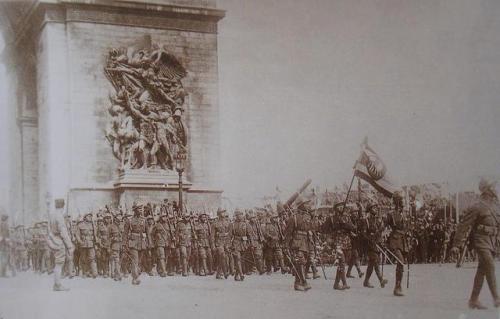The Siamese Expeditionary Force, World War IOne of the lesser known Allied Powers during World War I
The Siamese Expeditionary Force, World War IOne of the lesser known Allied Powers during World War I was the Kingdom of Siam, now called Thailand. Siam declared war on the Central Powers in July of 1917. Shortly afterward, plans were set into motion to organized an expeditionary force to fight on the Western Front. For Siam, taking an active part in the war was a move to show that the ancient Kingdom could act as an independent power in the modern age and could stretch it’s military muscle. Siamese independence was viewed as very valuable as the kingdom was the only country in Southeast Asia that was able to resist foreign colonialism and maintain it’s sovereignty. Furthermore Siam was neighbors with French Indochina, and allying with France could improve future relations. Finally participation in the war would also give Siam a place at the bargaining table when the Central Powers were defeated, and perhaps a share of the political spoils.The Siamese Expeditionary Force (SEF) was composed of an 870 man motor corps and a 414 man strong air force led by Major-General Phraya Bhijai Janriddhi.Initially the SEF was not equipped or prepared for World War I, so for several months it underwent training at the direction of officers who were educated in Europe and served as military observers on the Western Front. For the most part the SEF used French weapons and equipment as Siam did not have the ability to supply it’s expeditionary force. Thus the SEF was completely reliant on the French Army while on the Western Front. The SEF arrived in France on the 30th of July, 1918. During the Second Battle of the Marne and the Meuse Offensive the motor corps was used to transport supplies and wounded. However, tensions between French and Siamese officers, as well as a lack of competent translators prevented the SEF from being integrated into the French Army for front line combat operations. The infighting between Siamese and French officers became so heated that at one point the Siamese government considered canceling the mission altogether.When the Armistice was signed on November 11th, 1917, the SEF was ordered to cross the German border and serve as an occupation force. From December 1918 to July 1919, the SEF headquartered in Neustadt, located in the Rhineland-Palatinate. When the Treaty of Versailles was signed the SEF left Germany to participate in victory parades in Brussels, Paris, and London. The SEF disembarked for Siam in September of 1919. During the war the SEF lost 19 men, half due to the flu pandemic, the rest as a result of accidents. -- source link
Tumblr Blog : peashooter85.tumblr.com
#history#wwi#siam#thailand#thai history



